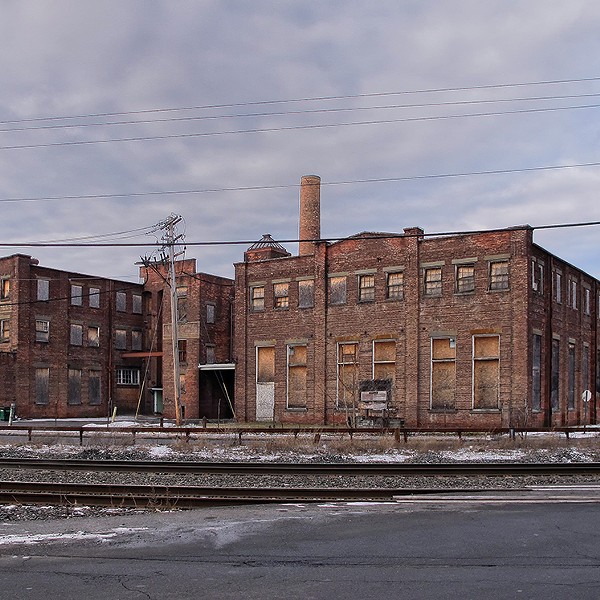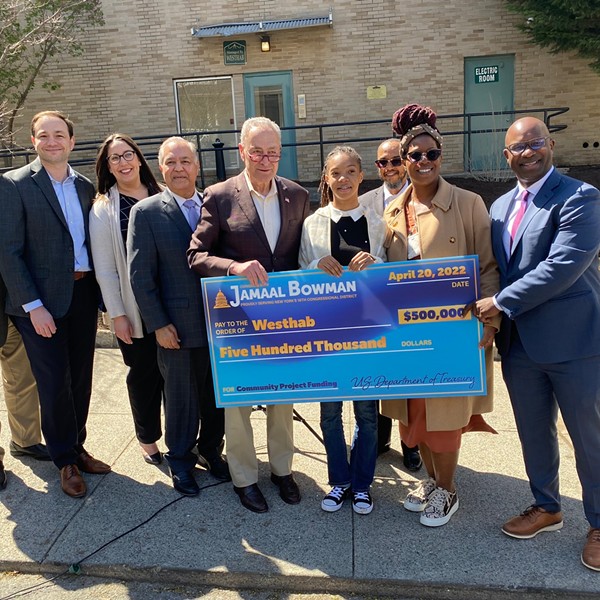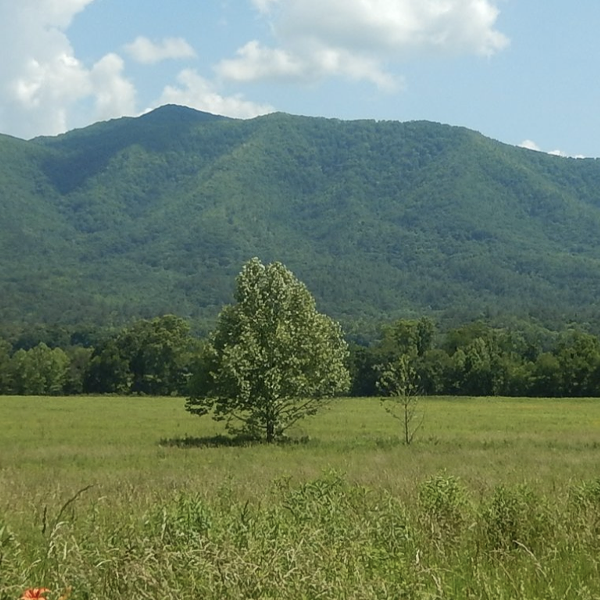There are a lot of places you could begin when discussing the state of Beacon today, but we should probably start with the juice bar. "The Main Squeeze was ahead of its time," says Mike Burdge, who used to work there. "If that juice bar was open today, it would kill."
The year was 2013. Beacon's renaissance, which had been building since the opening of Hudson Beach Glass and Dia:Beacon at the turn of the millennium, had just shifted into a higher gear with the arrival of the Roundhouse, a boutique hotel, restaurant, and cocktail lounge perched at the bottom of a waterfall. But the twin sparks that would really kick the city into overdrive—the relocation of legendary music venue The Towne Crier to Beacon and the transformation of an old diner on Main Street into the ramen and live music club, Quinn's—hadn't yet ignited. So maybe Beaconites weren't yet ready for The Main Squeeze and their $8 locally sourced juices (although they were ready to complain about Beacon turning into the kind of place that sold $8 locally sourced juices.)
The Main Squeeze shuttered a year later, but it cemented its place in Beacon lore forever. Not because of what happened when the lights were on, but because of what happened in the bar at night when the lights were off.
A native Beaconite, Burdge had left town in 2005 and joined the military to earn money for film school. After graduating, he came home, got a job at the juice bar, and realized that he liked talking about films more than making them. So at night, he transformed The Main Squeeze into Story Screen and began hosting films and discussions. If not many people in town were up for top-shelf, fresh-squeezed juice, they sure as hell were up for watching and talking about movies. Soon, Story Screen began popping up at other bars and restaurants after hours or on slow nights—a clandestine, moveable feast for cinephiles.
Now Showing
Jumpcut forward a few years. The old Beacon Theater on Main Street, which at various times in the past 100 years had been a performance venue, church, roller skating rink, and jazz club, was up for grabs again. The family that had developed the Roundhouse bought it and drew up plans to convert some of the cavernous space into apartments, and some of it into...something. The site's most recent iteration as a live theater hadn't proved successful. Would a movie theater work? Who in town would know something about movies?In a plot twist not even the hoariest Frank Capra crowd pleaser could pull off, Story Screen transformed into an actual movie theater: Two big screens, with a third, more flexible space still being built out to accommodate screenings, lectures, and performances. Cushy, stadium-style seating. $10 tickets. A rotating three-film lineup that usually consists of a second-run popular film, an arthouse film, and a kid-friendly revival (one week in April, that lineup translated into the latest version of A Star is Born, First Reformed, and The Iron Giant.) Plus the occasional surprise (Burdge was able to screen two showings of the new Avengers movie on opening night) and, yes, locally sourced beverages from a block away: sodas from Drink More Good and cold brew coffee from Big Mouth Roasters.
It might sound like a one-in-a-million miracle, but walk down to the other end of Beacon and you'll see it playing out again. In the back of a building that hosts such other recent success stories as Two-Way Brewing and a new, much-needed hardware store, sits Mother Gallery, which was opened two years ago by Paola Oxoa and Kirsten Deirup.
Oxoa had been in Williamsburg for 10 years and didn't think she would ever leave. The plan was: Don't get married, don't have kids, make art, die in your loft. It's a plan that probably sounds all too familiar to generations of female artists in New York City. But eventually Oxoa started to wonder why the first few waves of feminist artists were expected to sacrifice having a family in order to be an artist and how to change that. That led to Beacon.
"Beacon has paved the way for the artists who are still coming up here, and it's been really supportive," she says. She and Deirup now each have families of their own yet are still managing to navigate the male-dominated art world as not just artists, but gallery owners. And the work is paying off. On May 11, they'll open up in a new space just up the hill: the bottom floor of a stately brick building that they'll be sharing with the renowned New York City gallery Parts & Labor, which is moving in upstairs. The move is born out of necessity, as Two-Way will soon be expanding into the room that Mother was occupying, something that Oxoa and Deirup always knew was a possibility. And yet just at the right time, just the right space opened up, with just the right people eager to come on board to help. Oxoa is quick to credit the generations of feminist artists who came before Deirup and her, who laid the foundation that they're building on. But she's also quick to credit her new hometown. "I don't know of anywhere else this could happen," she says.
Making Magic
Why Beacon? Is it magic? The natural setting is certainly spectacular, with Mount Beacon towering majestically above the city and the energy of the Hudson River rushing by. Whatever it is, it has allowed Beacon to develop into a quirky, charming ecosystem of businesses, where you can find a world-class doughnut shop (Glazed Over) sandwiched between two used bookstores (Beacon Reads and Binnacle Books); where, in a few short years, the Hudson Valley Brewery has turned into a nonstop Coachella for craft beer lovers and the imminent arrival of a new brewery and taproom run by Garnerville's Industrial Arts Brewing looks to keep the good vibes flowing. Where local businesses like the kitchenware store Utensil and the Middle Eastern restaurant Ziatun can establish and expand; and where longtime fixtures like BJ's Restaurant are still frying up the best chicken and fish in town. It is a place where people like 84-year-old barber Alvin Bell, who spent 27 years working at the Nabisco factory before it was transformed into Dia:Beacon, can open up a business that survives for 30 years and counting.Perhaps it's magic. But magic is what the magician does just out of sight while you're distracted by the waving handkerchief. Magic is what happens unheralded and unseen, just beyond the spotlight. You want magic? Show up and do the work.
In the 12 years I've been living in, and writing about, Beacon, the biggest groundswell hasn't been the amount of restaurants and coffee shops that have opened up, but the amount of people who have dedicated themselves to reviving the civic life of the city. Both lifelong residents and recent transplants have picked up trash, weeded, formed committees, staged bake sales, painted murals, thrown cookouts, and traded childcare so that they could attend endless school board meetings. And then they ran for school board, the city council, the county legislature—and won—all while also having jobs, families, and art to make, or some combination of all three.
These are the people who have transformed the city, and these are the ones joining together to shepherd the city through what happens next. Because other forces have been at work transforming Beacon, and in the past year they've become impossible to miss. They're the three new apartment buildings on Main Street, which are taller than any other buildings around. They're the new condos by City Hall and the train station. These projects were drawn up and granted variances for height, parking, and other things years ago, when Beacon was still trying to attract developers and happy to let projects sail through with minimal attention. People are paying attention now.
Beacon's rents have skyrocketed in the past few years, forcing many longtime residents to move away and deterring new businesses from setting up shop in the area in the first place. There's hope that at least the new housing will help take some pressure off the market, but many of the apartments are being listed at prices comparable to Brooklyn. Will Greenpoint residents pay the same amount of money to live in Beacon? What happens if rents get so high that Main Street is once again as desolate as it was 20 years ago, only this time around the storefronts won't all be empty from lack of interest but because no one can afford them? And what's going to happen when all these new residents link up to the ticking time bomb that is the city's 100-plus-year-old sewage system?
A Bright Spot
This is the difference between speculative development and grassroots community improvement: The former is done by people seeking short-term gains, the latter by those who have been putting in sweat equity for years, because they know it will pay off in the form of a stronger city. The new Beacon Theater, containing both Story Screen and apartments, prove that building housing and improving a city's cultural and civic scene don't have to be an either/or proposition. But how many other developers will follow their lead? Tensions continue to rise as Beaconites push back in zoning board meetings and at the ballot box, while developers insist that their new buildings, some of which are full of apartments priced two to three times the average price in the city, are the future of Beacon. And a friend of one of the developers recently wrote a letter to the editor in the local paper, the Highland Current (which, full disclosure, I write for), suggesting that the citizenry anti-development fervor proves that Beacon has become hostile to outsiders. But anyone who thinks the city is hostile to outsiders has never bothered to come inside.No one embodied this communal spirit more than the Beaconite who would have turned 100 years old this month, folk icon and activist Pete Seeger. When Pete passed away in 2014, I asked many people in town to tell me about the first time they met him. Many of the stories began the same way: "I went down to a meeting of the Beacon Sloop Club to check it out, Pete saw me walk in and saw that I was new, smiled at me, got up, and offered me his chair."
That Sloop Club that Seeger helped found is still going strong over 40 years later, still offering free weeknight sails aboard the Woody Guthrie throughout the summer. Head down for a sail and see what the river does to you. Talk to the all-volunteer crew about what they do for the boat, for the river, and for the city. If you don't walk away thinking about what you're doing to make sure that all these things are still going to be there for the next generation, then that's on you.
If you've come to Beacon to make a killing, expect resistance. If you've come to make a living, someone here will always pull up a chair for you.
















